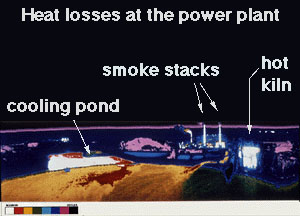ExploraTour - How to Build a Star
Why is this important to our story?
More than anything else, mass plays a critical role in determining whether or not a ball of interstellar gas will become a star. A clump of interstellar gas is made up of layer upon layer of gas encircling the center, adding its weight to the layers beneath it.
Imagine laying on the floor while layers of sand bags are being piled on top of you. The more layers of sand bags there are, the more crushed you feel beneath them and the hotter the temperature rises.
In the same way, the more gas that is added to a gas cloud, the hotter the center of the cloud gets and the more crushed (or compressed) it becomes.
When temperatures reach about 5 million degrees C at the center, nuclear reactions begin. This takes about 80 times the mass of Jupiter (0.08 of the sun's mass). Any less mass and the temperature does not reach a high enough value to ignite the fusion reaction. The gas ball does not become a star.












